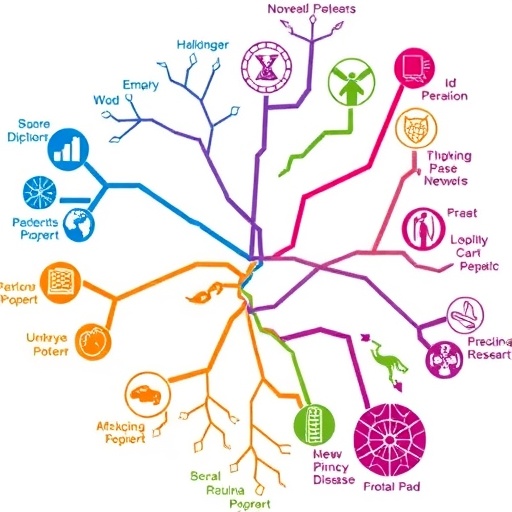In a groundbreaking advancement for the field of neurodevelopmental genetics, Mustafa Sahin, MD, PhD, Neurologist-in-Chief and Chair of the Department of Neurology at Boston Children’s Hospital, alongside his interdisciplinary collaborators, has secured a prestigious NIH grant exceeding $8.6 million. This substantial funding marks the commencement of the third five-year cycle under the Rare Disease Clinical Research Network (RDCRN), focused on the project entitled “Developmental Synaptopathies Associated with TSC, PTEN, SHANK3, and SynGAP1 Pathogenic Variants.” The initiative aims to deepen scientific understanding and therapeutic exploration of rare developmental brain disorders linked to specific pathogenic variants that disrupt synaptic function.
This research consortium now encompasses involvement from 13 premier hospitals across the United States, representing a significant expansion in collaborative capacity. The project’s core ambition is to provide a comprehensive, longitudinal characterization of affected individuals who harbor pathogenic variants in genes such as TSC1/2 (tuberous sclerosis complex), PTEN, SHANK3, and SynGAP1. These genes have been implicated as critical regulators of synaptic development and plasticity, with dysfunction leading to a spectrum of neurodevelopmental phenotypes including intellectual disability, autism spectrum disorders, epilepsy, and neuropsychiatric comorbidities. The consortium’s work seeks to unravel the nuanced cognitive, communicative, and behavioral profiles associated with these conditions.
One of the principal scientific goals entails the identification and validation of neurophysiological biomarkers related to sleep architecture and sensory processing deficits. These biomarkers are anticipated to serve as objective measures to monitor disease progression and therapeutic response in clinical settings. Ongoing efforts include utilizing advanced neuroimaging techniques, electrophysiological assays such as EEG and MEG, and detailed neuropsychological evaluations. Such multimodal approaches are essential given the complexity of synaptopathies, which manifest with heterogeneous clinical presentations and underlying molecular etiologies.
Beyond clinical characterization, the RDCRN project prioritizes translational research to develop strategic, disorder-specific pilot studies. These pilot projects aim to test emerging therapeutic hypotheses rooted in molecular pathophysiology, using both pharmacological agents and novel neuromodulation strategies. The deployment of targeted therapies, particularly those affecting mTOR signaling pathways in TSC or synaptic scaffolding proteins like SHANK3, represents the forefront of personalized medicine in rare neurodevelopmental disorders. Each pilot study will be meticulously designed to optimize clinical outcome measures and biomarker integration.
Integral to the consortium’s vision is the mentorship and fostering of the next generation of clinical and basic science investigators. By cultivating a robust academic pipeline, the project ensures sustainability and innovation beyond the immediate grant cycle. Training programs and cross-institutional workshops emphasize interdisciplinary collaboration, data standardization, and patient-centered research paradigms. This commitment to capacity building addresses a critical bottleneck in the field: the limited number of investigators equipped to tackle rare genetic synaptopathies at the interface of neurology, psychiatry, and molecular neuroscience.
Furthermore, dissemination of research findings and community engagement remain a strategic focus. The consortium actively partners with patient advocacy groups to enhance outreach, education, and public awareness surrounding these rare disorders. Such partnerships not only amplify the voices of affected families but also improve clinical trial recruitment and real-world applicability of research insights. Effective communication strategies leverage digital platforms and consensus reports to translate scientific advances into accessible knowledge for both clinicians and patients.
Sahin emphasizes the collaborative infrastructure established through this RDCRN initiative. The integration of multi-site data facilitates comparative analyses across distinct genetic conditions, allowing for elucidation of shared and unique pathogenic mechanisms. This framework supports an evolution from disease-specific silos toward a holistic understanding of synaptopathies as a spectrum, a paradigm shift with profound implications for therapeutic development. The consortium’s approach thus represents not only a scientific milestone but also a new blueprint for rare disease clinical research.
Clinically, patients with mutations in TSC, PTEN, SHANK3, and SynGAP1 genes often exhibit overlapping neuropsychiatric phenotypes, including autism spectrum disorders, epilepsy, intellectual disability, and anxiety or mood disorders. The synaptic abnormalities resulting from these mutations affect neuronal communication and plasticity, which are fundamental to cognitive and social functioning. By elucidating the molecular underpinnings and clinical correlates, the RDCRN project aspires to bridge the gap between genotype and phenotype, informing precision diagnostics and tailored interventions.
Emerging evidence underscores the critical role of synaptic proteins in neurodevelopmental pathophysiology. For instance, SHANK3 is a scaffolding protein essential for synapse formation and maintenance, and its disruption leads to altered glutamatergic signaling pathways. Similarly, mutations in SynGAP1, a synaptic GTPase-activating protein, disrupt synaptic signaling cascades, resulting in intellectual disability and epilepsy. PTEN and TSC genes modulate key signaling pathways like PI3K-AKT-mTOR, so their pathogenic variants cause cellular and network-level dysfunctions manifesting in neurological and psychiatric disorders.
The scale and scope of this consortium’s work are poised to yield transformative insights not only into the molecular basis of these complex syndromes but also into the practical therapeutics that can alleviate patient burden. By fostering interinstitutional expertise and leveraging state-of-the-art methodologies, the RDCRN consortium spearheaded by Dr. Sahin offers a beacon of hope to patients and families contending with the challenges of rare neurodevelopmental synaptopathies. This funding renewal enables sustained progress, with the promise of translating cutting-edge science into clinical realities over the next five years.
In summary, the award of over $8.6 million in NIH funding to Dr. Mustafa Sahin and the multi-hospital consortium represents a critical investment in the future of rare neurogenetic disease research. Through comprehensive phenotyping, biomarker development, targeted interventions, and workforce cultivation, this RDCRN project is uniquely positioned to unravel the complexities of developmental synaptopathies related to TSC, PTEN, SHANK3, and SynGAP1 variants. Its impact will reverberate across clinical practice, research innovation, and patient advocacy, ultimately transforming the landscape of rare disease treatment.
Subject of Research: Developmental synaptopathies linked to pathogenic variants in TSC, PTEN, SHANK3, and SynGAP1 genes.
Article Title: Developmental Synaptopathies: Unlocking Therapeutic Potential Through National Collaborative Research
News Publication Date: Not specified
Web References: Not provided
References: Not provided
Image Credits: Not provided
Keywords: Developmental neuroscience, Developmental disorders, Neurology, Cognitive development, Genetic disorders




